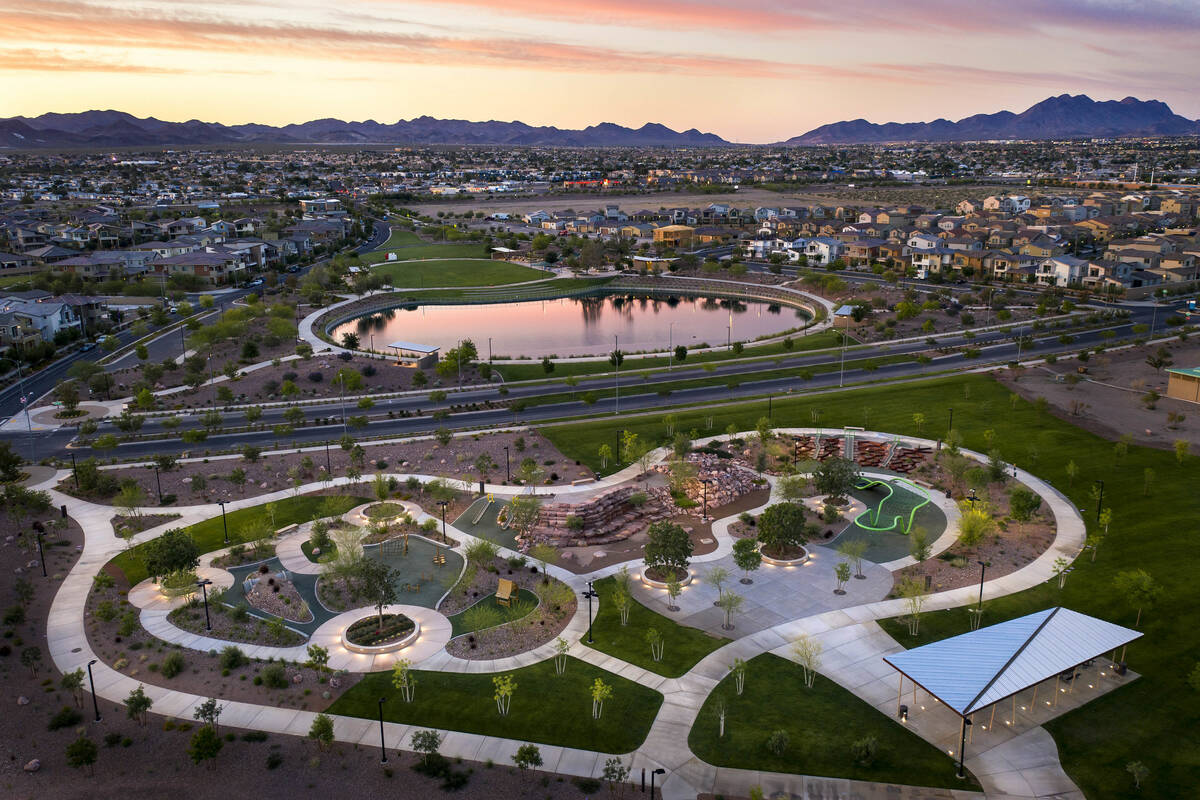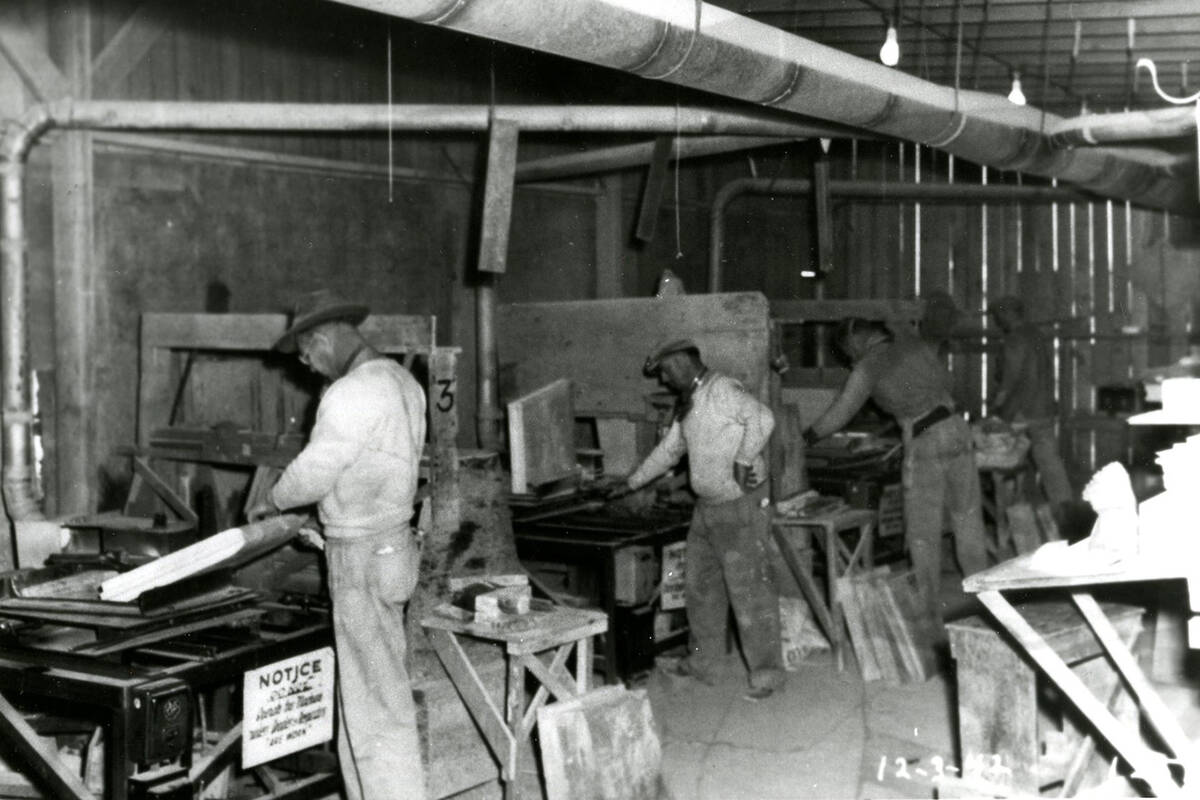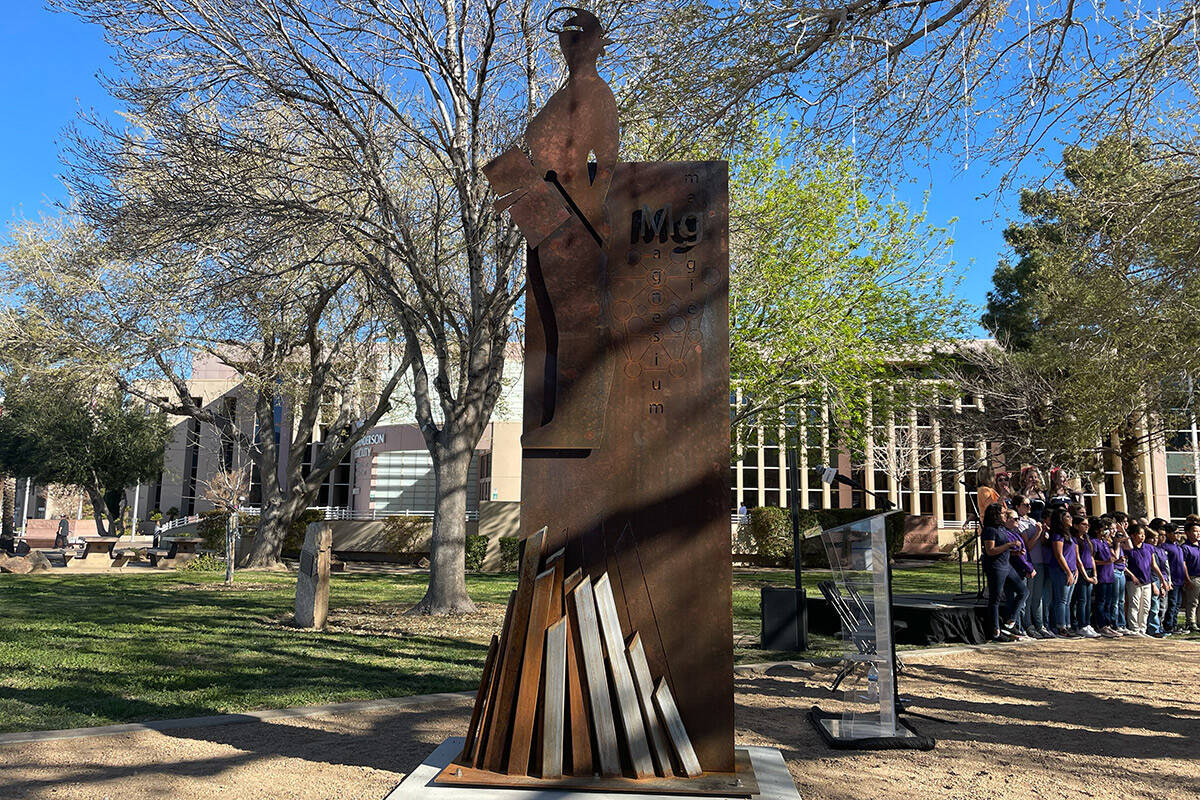What is the history of the Cadence land in east Henderson?
The 2,200 acres in east Henderson just south of the Clark County Wetlands Park that are now part of the Cadence master-planned community are some of the most environmentally scrutinized land in the entire area, the developer said.
The federal government in 1942 set up a magnesium plant in the Henderson area to help with World War II efforts and the site held wastewater in unlined ponds from the production of titanium, chlorine, pesticides and rocket fuel. Manufacturers stopped dumping wastewater into unlined ponds in 1976 and all industrial activity ceased at the Cadence site in 2005.
“The property where Cadence is never had any manufacturing on it, but what they did have was some process waste and they put them in open ditches,” said Lee Farris, the president of the LandWell Company, the master-developer of Cadence. “And at that time, the best way to dispose of the waste was to build ponds, let the sun evaporate the liquid and what was left behind was some solid process waste.”
After industrial activity ceased in 2005, surveys began on the land north of Boulder Highway and Lake Mead Parkway, which turned up a host of contaminants including metals, radioactive isotopes, pesticides, asbestos and perchlorate. A massive soil cleanup then started, a $135 million effort paid for with private money, which removed 3.5 million cubic yards of contaminated earth.
The land was then cleared by the Nevada Department of Environmental Protection in phases, signing off on the last acreage in 2015, however Farris said he still gets regular questions about the safety of the land.
Now the Cadence community houses 5,248 families and also includes houses for rent and two apartment projects. Multiple parks have been completed and are in progress along with the Cadence Village, a 30-acre center which has various amenities. Farris estimates Cadence should be fully built out sometime around 2031.
Farris said he gets the most questions about arsenic but the background level for the element at Cadence is much lower than other parts of the valley. He said LandWell did “cradle to grave” human health risk assessments with the idea that people would live on the land for their entire lives, and found no issues.
The first residents moved into Cadence in 2015.
Farris also confirmed to the Las Vegas Review-Journal that they have not received any health complaints or issues with soil contamination from residents who live at Cadence. It it one of the top-selling master planned communities in the Las Vegas Valley along with Summerlin.
“My parents live out there, we have employees who live out there,” Farris said. “When we were doing construction I took my kids out there all the time. I’ve worked here for 20 years and when we got done with the restoration work there was no doubt in my mind that we did an extraordinary job and were satisfied with the work that we’d done.”
Exploring the history further
In 1972 Congress passed the Clean Water Act and Ferris said the magnesium plant in Cadence was no longer allowed to put the magnesium runoff wastewater in the ponds anymore, so then the plant lined a set of ponds that were located on the western side of the property. He said the lined ponds were discontinued in the early 2000s when a treatment plant was built on the property by an industrial company who were leasing the land from the state.
“And then in the 1990s, as Vegas started to boom, the shareholders of Basic Management (now LandWell) decided they would like to investigate the possibility of selling some of their land, and so they worked with the state and did get permission to sell a bunch of their land but this site obviously required further investigation.”
Work then began with the Nevada Division of Environmental Protection, however Farris said the process was going too slow and so in 2006 they entered into an agreement to do the environmental restoration themselves.
“We voluntarily agreed to clean up the entire site, and in 2008 we selected a contractor and started doing the restoration work. And essentially the restoration work involves picking up the material that was on the east side of Boulder Highway. And we built a Corrective Action Management Unit, which is a fancy federal government word for landfill. And we took the impacted material and we put it in the landfill that’s on the west side of the industrial complex, and that landfill is completely lined bottom and top and it’s still monitored by us to this day.”
Contact Patrick Blennerhassett at pblennerhassett@reviewjournal.com.

























